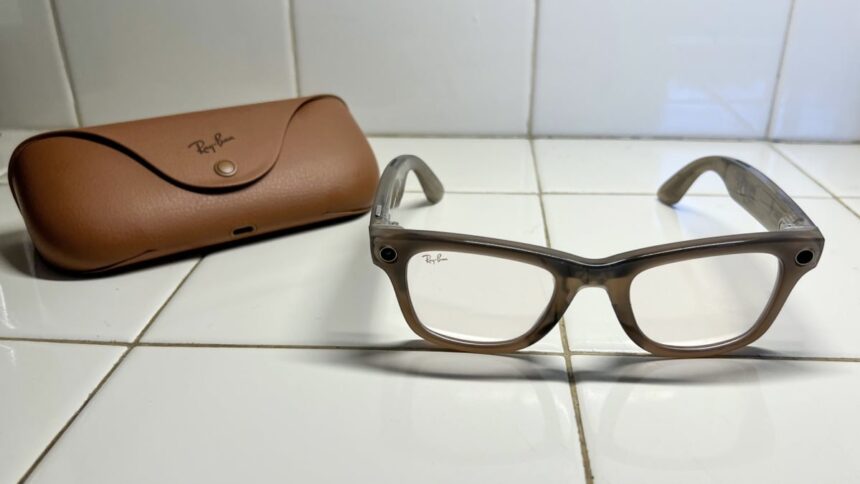The Ray-Ban Meta Smart Glasses After Six Months: An In-Depth Review
Half a year back, a comprehensive review was conducted on the Ray-Ban Meta smart glasses. For those unfamiliar, these innovative eyewear devices feature a camera, open-ear speakers, microphones, and voice-activated Meta AI integrated into stylish Wayfarer frames. While they initially appear as regular sunglasses, their tech-savvy attributes set them apart. They were compelling enough to warrant the addition of prescription lenses, and they quickly became a staple in daily wear. The real question, however, was how they would perform after transitioning from a novel gadget to a routine accessory that requires charging. The verdict after six months? They remain a solid choice, albeit with a deeper appreciation for their functionalities.
Perceptions of Everyday Use
Once the initial excitement faded, the weight of the Ray-Ban Metas became apparent. Weighing in at approximately 49 grams—heavier than standard sunglasses—the addition of prescription lenses pushed the total to 54 grams. For comparison, traditional glasses typically weigh around 39 grams. This weight difference made extended wear somewhat uncomfortable. Consequently, situations where smart capabilities weren’t required led to switching back to regular glasses, reserving the Ray-Ban Metas for moments needing photography or hands-free functionality. A common slip-up was mistakenly activating the voice command while wearing regular specs, resulting in unintended conversations with my artificial assistant.
Durability and Style: A Positive Experience
High praise to Ray-Ban, Meta, and the production team behind these glasses; they demonstrate excellent durability. The technology remains as efficient as upon initial unboxing, with the frames exhibiting no signs of wear, such as bending or warping. The iconic Wayfarer style has timeless appeal, ensuring that these glasses haven’t lost their charm over the past six months—even James Dean would approve.
Battery Performance: Room for Improvement
Meta claims a battery lifespan of “up to four hours,” which may be overly optimistic. Frequent charging becomes necessary, especially during outings where numerous photos or videos are captured. The glasses’ case includes a built-in charger, which is helpful since vision remains unaffected even if the battery depletes. However, this limitation can become frustrating during longer events, like a graduation ceremony, where capturing moments becomes a challenge without packing a spare pair of glasses.
Another quirk involves the inability to toggle off low battery alerts without silencing all notifications. While this is a common issue in tech, it would be beneficial to separate notifications specific to battery life.
Social Dynamics: Attention and Awareness
Initially, wearing the Ray-Ban Metas drew minimal attention, but growing familiarity with the product led to increased scrutiny. Questions such as “Are you photographing me?” became common. This shift opened discussions surrounding privacy and surveillance—a topic that can be uncomfortable. The glasses’ fusion of technology and fashion is still novel, and reactions vary among individuals.
A Features Breakdown: Assessment of Utility

The Ray-Ban Meta glasses boast an array of features, which vary in utility. Here’s a summary of the functionalities ranked by usage:
Camera:
The camera is a standout feature. Using a smartphone can feel cumbersome due to the steps involved, whereas activating the camera by tapping the frame or issuing a voice command is significantly more convenient. The quality of images is impressive for casual snapshots, although they cannot compete with dedicated cameras, especially in low-light conditions.
Text and Calls:
Receiving and responding to texts via voice command is beneficial, especially in multitasking situations. The call quality is reliable, with accurate voice recognition irrespective of external noise, making it easy to initiate texts without distraction.
Audio Playback:
The audio experience is average. Although the sound quality suffices for casual listening, those who appreciate music might find it lacking. Nonetheless, effortless control of music services through voice commands is a notable plus.
Meta AI:
Meta’s AI features are either a compelling attraction or a hidden drawback. While the novelty of voice-activated commands may captivate at first, regular use declines quickly. The AI excels in translating common phrases, showcasing impressive accuracy during real-time translations—a near-magic experience for users.
Desired Features for Future Versions
While the Ray-Ban Metas are edging closer to becoming a genuine digital assistant, further advancements are desired. Future iterations should embrace features like real-time booking for travel accommodations or a more comprehensive functionality set.
Privacy Considerations
Concerns regarding privacy have surfaced, highlighted by Meta’s recent notifications about data usage. Users are encouraged to manage settings regarding camera usage and voice recordings. Though the information may be unsettling, it’s important to assess personal comfort with such technology; for many, the functionality outweighs the risks.
Value Proposition: Are They Worth It?
Ultimately, determining the glasses’ value is subjective. Priced at $299, they offer an intriguing combination of features—from a convenient camera to integrated AI and audio capabilities. For those considering prescription options, the financial outlay may even be less than standard eyewear.












